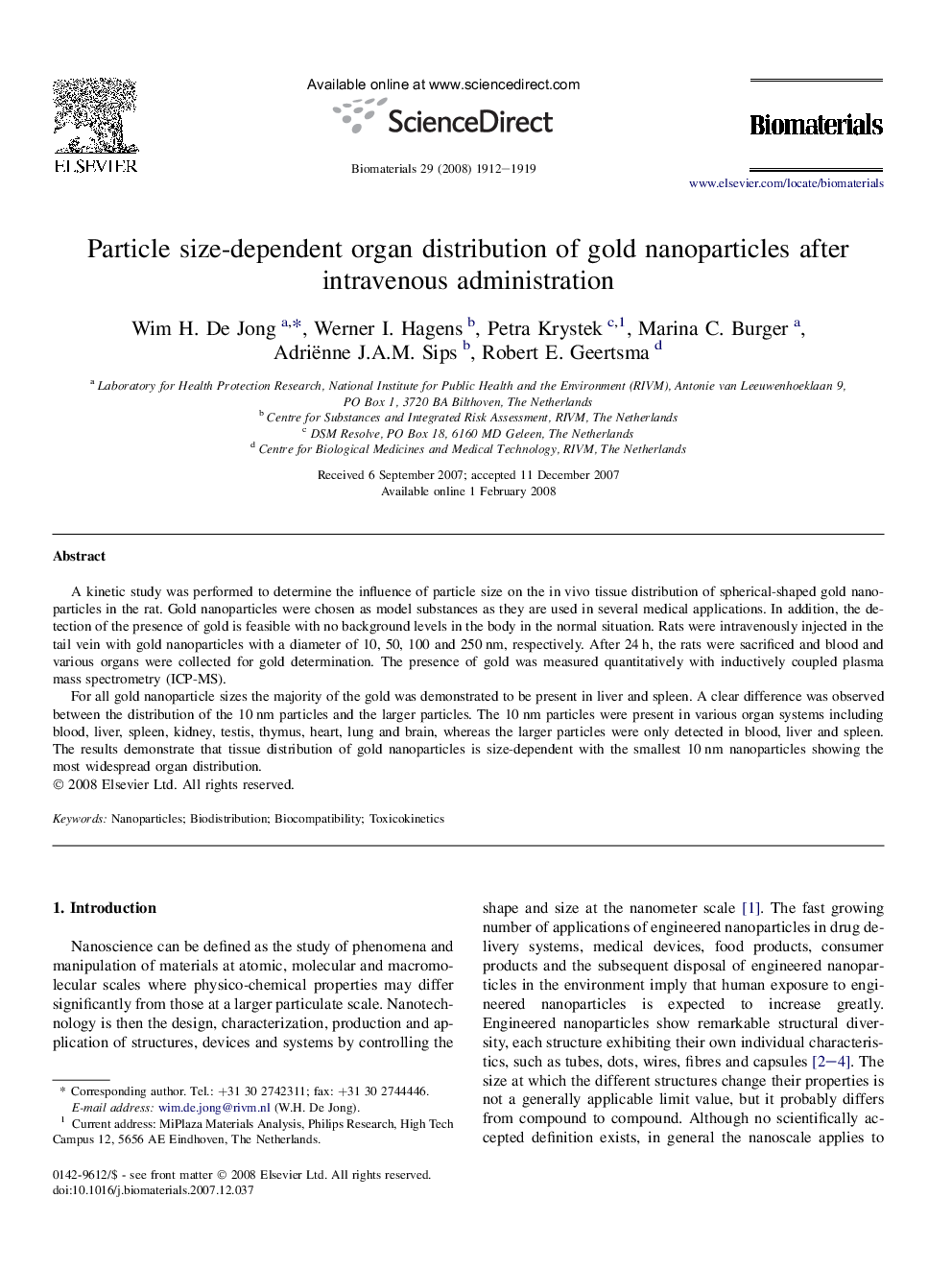| Article ID | Journal | Published Year | Pages | File Type |
|---|---|---|---|---|
| 9587 | Biomaterials | 2008 | 8 Pages |
A kinetic study was performed to determine the influence of particle size on the in vivo tissue distribution of spherical-shaped gold nanoparticles in the rat. Gold nanoparticles were chosen as model substances as they are used in several medical applications. In addition, the detection of the presence of gold is feasible with no background levels in the body in the normal situation. Rats were intravenously injected in the tail vein with gold nanoparticles with a diameter of 10, 50, 100 and 250 nm, respectively. After 24 h, the rats were sacrificed and blood and various organs were collected for gold determination. The presence of gold was measured quantitatively with inductively coupled plasma mass spectrometry (ICP-MS).For all gold nanoparticle sizes the majority of the gold was demonstrated to be present in liver and spleen. A clear difference was observed between the distribution of the 10 nm particles and the larger particles. The 10 nm particles were present in various organ systems including blood, liver, spleen, kidney, testis, thymus, heart, lung and brain, whereas the larger particles were only detected in blood, liver and spleen. The results demonstrate that tissue distribution of gold nanoparticles is size-dependent with the smallest 10 nm nanoparticles showing the most widespread organ distribution.
